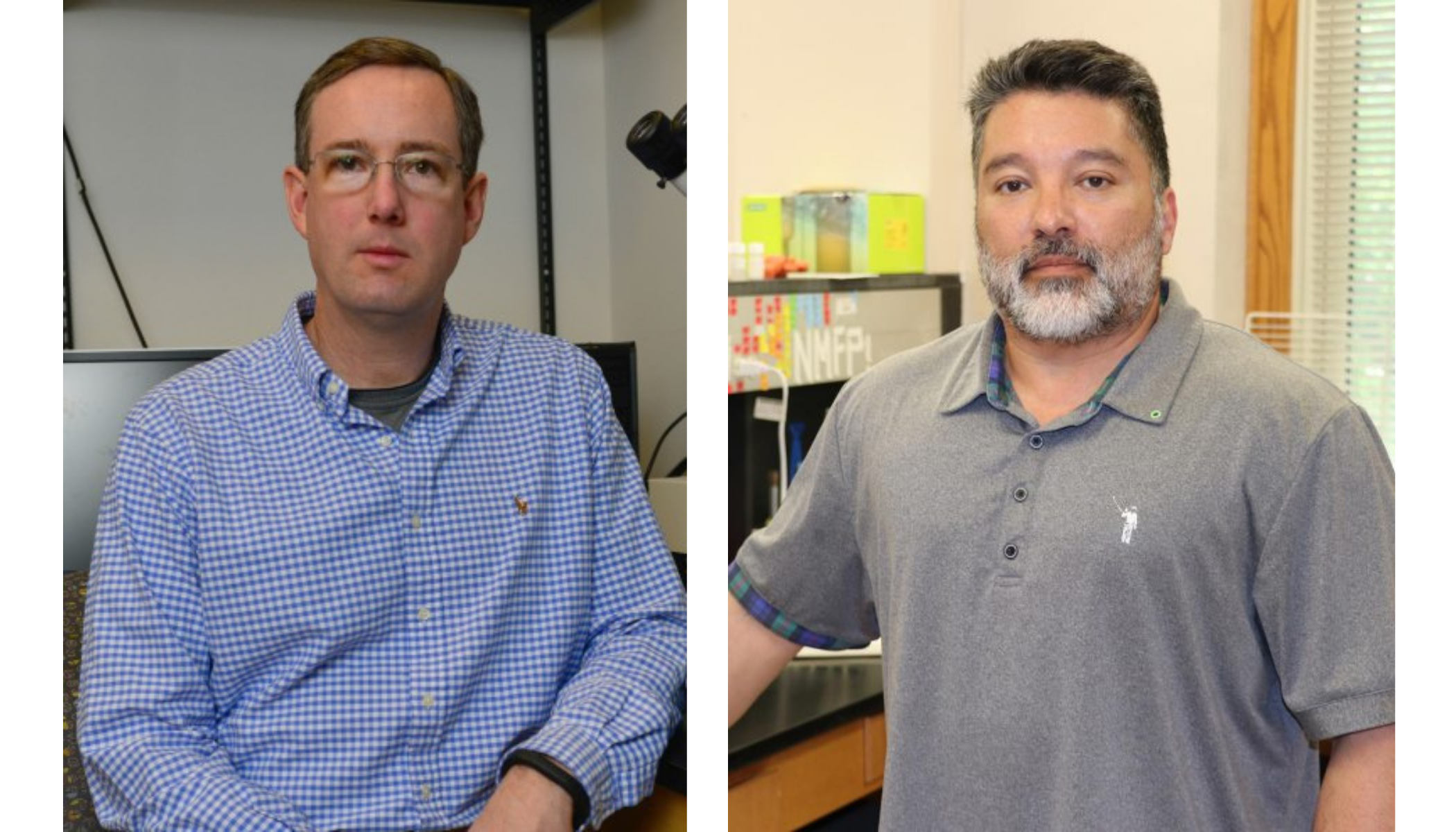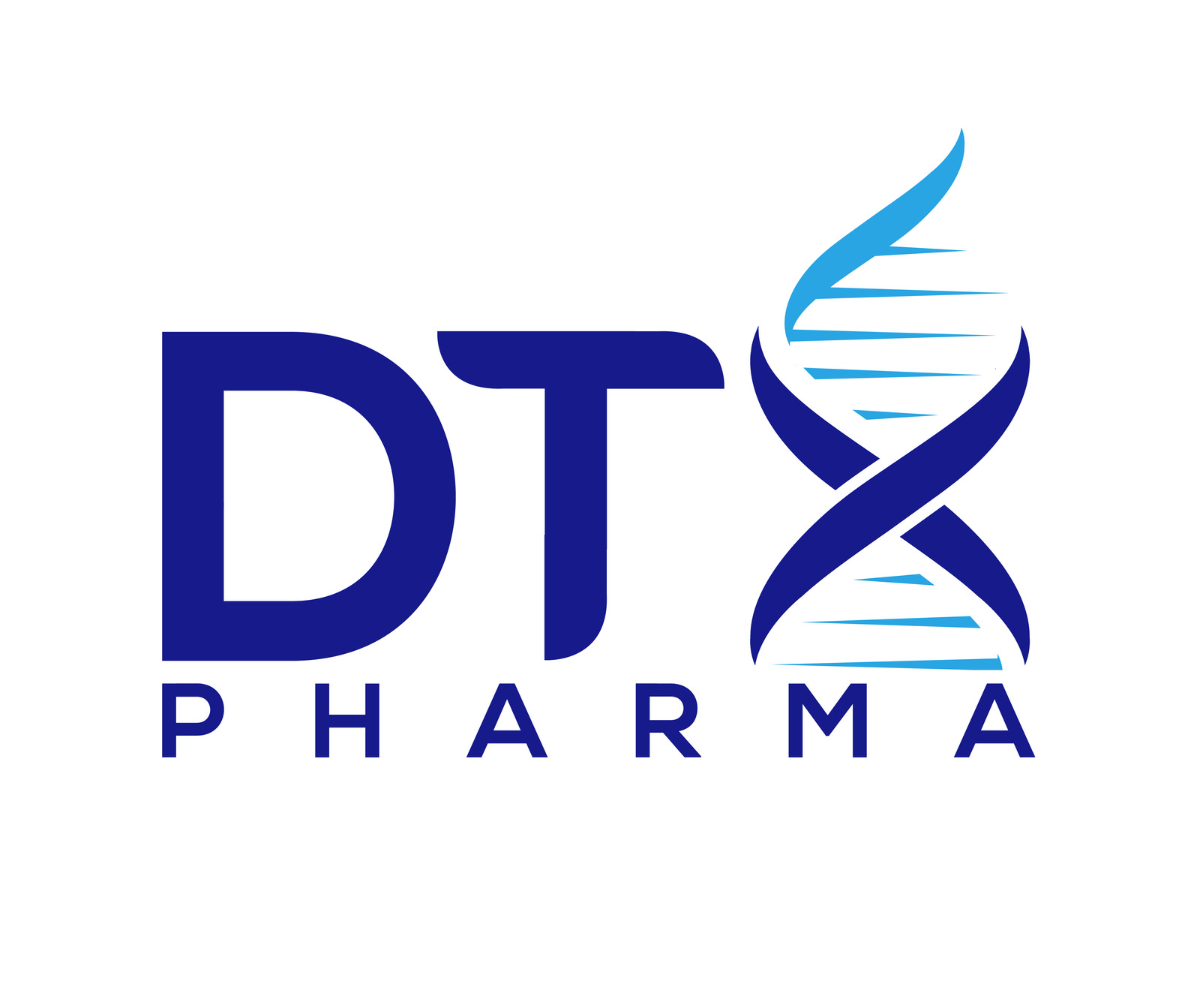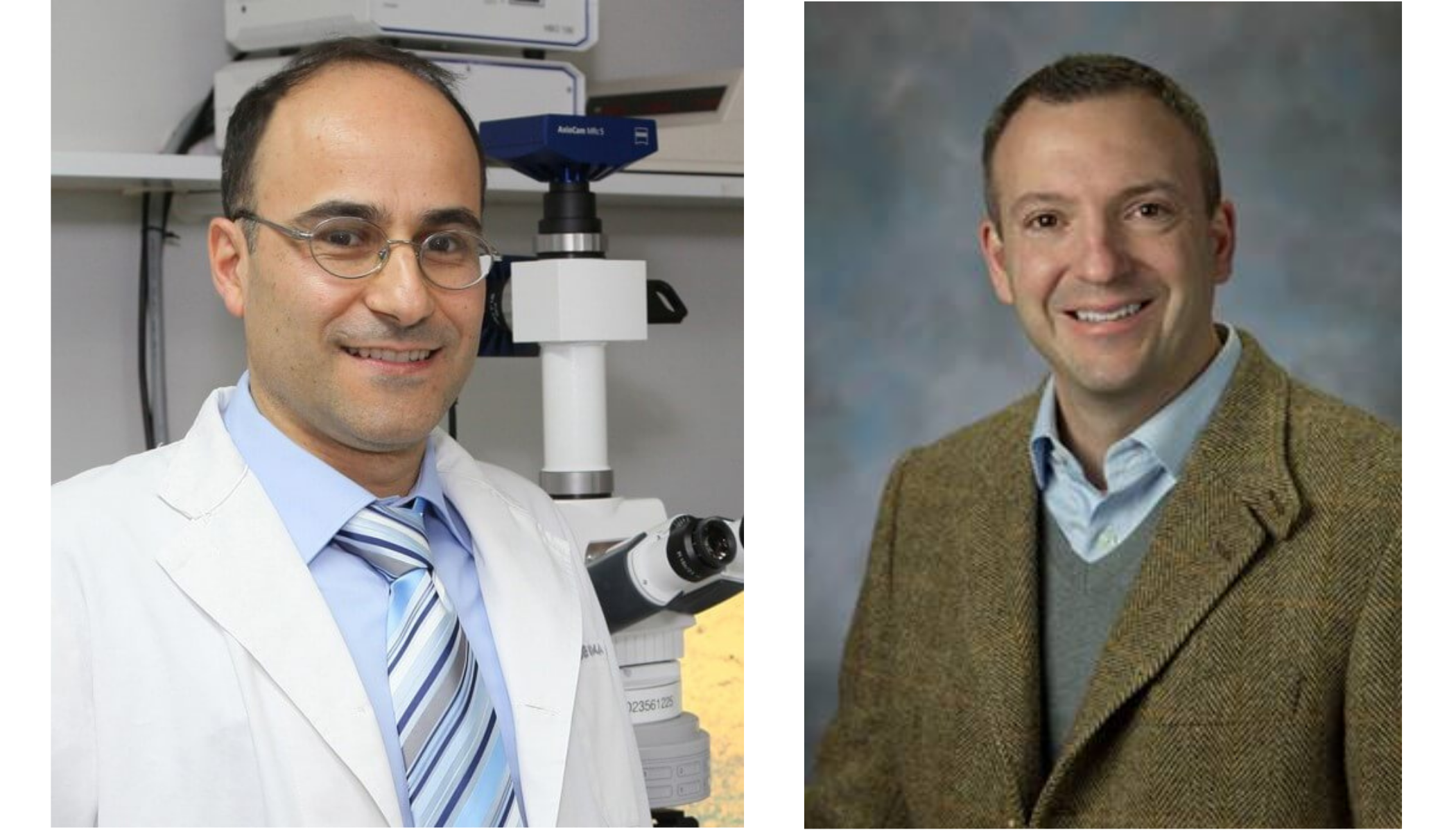Research Funded by the CMT Research Foundation
We fund innovative research that has the potential to be quickly translated into treatments.
1J Foundation, Dr. Stephan Zuchner and University of Miami Miller School of Medicine
ITPR3 gene mutation
The CMT Research Foundation and the 1J Foundation have joined forces to support the development of a mouse model for CMT1J, a newly identified subtype of Charcot-Marie-Tooth disease. Led by Dr. Stephan Zuchner at the University of Miami, the project aims to understand how mutations in the ITPR3 gene, which regulates calcium flow in nerve cells, contribute to CMT1J. The model will be available for other researchers to study the disease. The collaboration reflects both organizations’ commitment to finding effective treatments for all forms of CMT, particularly addressing the urgent need for therapies for CMT1J patients, who can experience varying degrees of severity.


Armatus Bio Inc., Columbus, Ohio
A Potential “Precision Drug Therapy” For CMT1A
In this new CMTRF-funded study the clinical candidate, called ARM-101, will deliver the miRNA inside a viral carrier called an adeno-associated virus (AAV). In animal-based studies, ARM-101 will be delivered by a single injection adjacent to the spinal cord, in a standard clinical manner that is used to deliver many other drugs including painkillers. The goals of this study include understanding if and how ARM-101 is reaching the Schwann cells and having the desired effect; learning more about the drug’s dynamics while in the body, dosage versus outcome; and ultimately, achieving clinically meaningful functional improvements.


Vanderbilt School of Medicine Basic Sciences
PMP22 stabilization for CMT1A
CMT1A is known to be caused by overproduction of PMP22 protein. Early research indicates that excess PMP22 protein within the cell interferes with transport of the protein to the cell surface, causing toxicities, and leading to defects in the myelin sheath. Normalizing PMP22’s transport to the cell surface could benefit CMT1A symptoms. This project will utilize Vanderbilt University’s capabilities to screen a collection of small molecule compounds for their activity to improve PMP22 transport and normalization of myelin formation in CMT1A mouse neurons. Completion of these studies has potential to impact discovery of a novel therapeutic approach for the treatment of CMT1A.


Augustine Therapeutics, Belgium
Small Molecule Inhibitors of HDAC6
Inhibition of an enzyme called histone deacetylase 6, or HDAC6, has been shown in mice to be protective in several types of CMT. However, early HDAC6 inhibitors tested in CMT demonstrated concerning toxicities, especially for long-term use. Augustine Therapeutics has developed a new class of HDAC6 inhibitors that avoids these toxicities and has exhibited exciting potential in a mouse model of CMT1A. This project will expand on these preliminary results, thoroughly evaluating the lead drug candidate’s toxicities, optimal dosage, and efficacy in symptom prevention and reversal in CMT1A mice. Augustine Therapeutics has two additional drug candidates available for testing if the lead candidate fails safety testing. These studies are a necessary step towards the development of a new therapeutic for the treatment of CMT1A.


Shashi Murthy, PhD, Nanite Inc., Boston, MA
Overcoming the Blood-Nerve Barrier with Polymer Nanoparticles (PNPs)
The CMT Research Foundation has partnered with Nanite Inc., a Boston-based biotechnology company that specializes in advanced techniques to improve drug delivery. Developing safe, effective methods to deliver therapeutics to the peripheral nervous system is a critical step towards a cure for CMT. The cells of the peripheral nervous system are shielded by the blood-nerve barrier, which makes it difficult to achieve effective local concentrations of the therapeutic. This project will explore the delivery of genetic medicines to Schwann cells via polymer nanoparticles (PNPs), an emerging technology for drug delivery. PNPs will be optimized both for their ability to cross the blood-nerve barrier and their ability to deliver genetic therapies to Schwann cells. This project is targeting CMT1A, but if successful, the polymersome technology could be applied to other types of CMT.


Dr. Alessandra Bolino, Ospedale San Raffaele, Milan, Italy
Molecular Pathways Targets for CMT4B1
The Muscular Dystrophy Association (MDA) and CMT Research Foundation (CMTRF) announced joint funding for a study by Alessandra Bolino , PhD, (pictured left) at San Raffaele Hospital (Ospedale San Raffaele), Italy, that targets CMT4B1. This project will explore targets in the molecular pathways implicated by CMT4B1. This work has the potential to positively impact several other forms of CMT that are characterized by myelin outfoldings, including CMT4B2, CMT4B3, CMT4C, and CMT4H.


Samsara Therapeutics
Autophagy Enhancers for CMT1A
In CMT1A the body produces too much PMP22 protein in the peripheral nerves, and a major goal of drug development in CMT1A is to reduce the amount of PMP22 protein in nerve cells. Samsara Therapeutics has discovered a number of drug-like molecules called autophagy enhancers that stimulate the body’s natural ability to remove and recycle damaged or dysfunctional proteins. In an early preclinical study, they showed that this class of drugs improves outcomes in CMT1A model mice, reducing PMP22 protein levels and restoring measures of nerve structure and function. This partnership will allow Samsara to further develop these molecules and prepare for clinical trials. The project is divided into two broad sets of activities – compound optimization and IND-enabling studies. If the project is successful, it will result in the identification of a lead candidate and a data package to submit to the FDA ahead of potential clinical trials. The principal investigator for the project is John K. Blackwood, PhD, Vice President of Biology (pictured).


Dr. Afrooz Rashnonejad, Ohio State University and Nationwide Children’s Hospital Center for Gene Therapy, Columbus, Ohio
Gene Therapy for All or Nearly All Forms of CMT1B
In CMT1B, the myelin sheath of the peripheral nervous system is compromised because of a dysfunctional protein created by mutations within a gene called, myelin protein zero, or MPZ (aka P0), a necessary component of the myelin sheath. With funding from the CMT research foundation, Dr. Rashnonejad is creating a gene therapy that has the potential to treat all or nearly all forms of CMT1B. The research team aims to design a gene therapy that both reduces the expression of the mutant MPZ and replaces it with healthy MPZ. Dr. Rashnonejad has already designed these elements of the gene therapy. The next step, made possible by your generosity, is to further develop them, package them together in an AAV9 delivery vector, and test the full therapeutic for safety and efficacy in CMT1B mouse models.


Dr. Charles Abrams, University of Illinois Chicago
Testing Inosine for Treatment of CMTX
The CMT Research Foundation is partnering with University of Illinois Chicago’s Dr. Charles Abrams to test a potential therapeutic for CMT1X, the second most common form of CMT, behind only CMT1A in prevalence. This project will test whether treatment with inosine may ameliorate CMT1X symptoms or even change the course of the disease. Inosine is an anti-inflammatory small molecule, and its levels are reduced in animal models of CMT1X. It is hypothesized that lower inosine levels may play a role in the nerve inflammation seen in people with CMT1X and that raising inosine levels may have therapeutic benefit.
To date, Dr. Abrams and his team have identified an optimal therapeutic dose and dosing schedule for inosine in mice with CMT1X. In the next phase of the project, they will be measuring the effects of inosine treatment on the level of inflammation within the peripheral nervous system. If successful, the project will culminate in a trial of inosine therapy in mice with a genetic mutation that causes CMT1X.


Dr. Alessandra Bolino, Ospedale San Raffaele, Milan, Italy
In Partnership with AcuraStem
Preventing CMT4B1 with a Novel PIKfyve Inhibitor
The CMT Research Foundation is collaborating with patient-based drug discovery platform company AcuraStem and renowned expert in CMT Dr. Alessandra Bolino to test a novel PIKfyve inhibitor for its ability to prevent disease in CMT4B1. This particularly severe form of CMT usually begins before a person’s third birthday, frequently leads to wheelchair use, and can even cause death from weakening of the muscles that control breathing.
CMT4B1 is caused by mutations of the gene MTMR2, which leads to excessive levels of a fatty substance called PI(3,5)P2. This in turn causes the myelin sheath to become misshapen and dysfunctional, quickly leading to nerve degeneration. Because this fatty substance is normally produced by the enzyme PIKfyve, inhibiting the activity of PIKfyve may lower PI(3,5)P2 levels to normal, thereby warding off nerve dysfunction and preventing the symptoms of disease. This two-year project will test the new PIKfyve inhibitor in both cell models and rodent models of CMT4B1.
This project has successfully passed its first stage, a series of tests to ensure that the drug candidate travels to the peripheral nerves in healthy animals and inhibits PIKfyve in the cells there. Furthermore, stage one resulted in finding a series of dose levels that are expected to be safe and effective in stage two of the research, a preclinical trial of the drug candidate in CMT4B1 mice.

Dr. James Dahlman, Georgia Institute of Technology and Emory School of Medicine
Using Lipid Nanoparticles to Deliver CMT Therapies to the Peripheral Nervous System
This innovative research collaboration seeks to overcome the challenges of delivering CMT therapies to the peripheral nervous system by using lipid nanoparticles (LNPs), considered among the most advanced delivery systems for genetic therapies. Dr. James Dahlman is a world-renowned expert in the design of lipid nanoparticles and has developed a system to rapidly identify LNPs that can enter other cell types. Using this approach, he has designed nanoparticles that efficiently deliver gene therapy payloads outside the liver, and several have been licensed for clinical development.
With funding from the CMT Research Foundation, Dr. Dahlman and his research team will utilize this approach to identify LNPs that can deliver genetic therapies to Schwann cells — the specialized cells that protect the peripheral nerves and whose dysfunction causes disease in the most common forms of CMT. The Food and Drug Administration (FDA) and European Medical Association (EMA) have already approved LNPs to treat another genetic condition. Additionally, LNPs serve as the delivery vehicle for two of the COVID-19 vaccines that have received FDA emergency use authorization and are now being rolled out worldwide. However, LNPs have not yet been tried in CMT because of the difficulty in designing them to target tissues other than the liver.
If successful, findings from this study could ultimately result in the design of therapies for CMT patients that restore normal protein function.

The Jackson Laboratory
Building Disease Models to Better Understand How Mutations in MPZ Lead to CMT1B
The Jackson Laboratory will create several mouse models that will be instrumental in learning how gene mutations in MPZ lead to degeneration of the myelin sheath surrounding nerves in CMT1B. This is an important project for CMT drug development because these models will add to the supply of “humanized” models in CMT, of which there are very few today. The models will be made to express the human form of the MPZ gene, which gives a higher probability of success for developing and testing gene therapies. Using these “humanized” models, the translation to people with CMT could be easier.

Dr. Chris Lorson & Dr. Michael Garcia, University of Missouri
Precision Medicine Model for CMT
The CMT Research Foundation is collaborating with Dr. Chris Lorson and Dr. Michael Garcia of the University of Missouri to develop a “knockdown and replace” gene therapy for CMT2E, which is caused by mutations in the NEFL gene. This gene therapy is designed to both silence the abnormal gene and simultaneously replace it with genetic material that will produce functional protein. If the approach is successful, it could potentially be used for other forms of CMT as well, particularly those that are caused by mutations that require both silencing of a mutated gene and replacement with normal protein — whether the mutation is currently known or has yet to be discovered.
Milestone 1 of the project is now complete, with encouraging results. In this stage of the research, the scientists tested several versions of the therapy for their ability to silence the NEFL gene, and three successfully reduced expression to nearly nothing. The team has now selected one version to take forward into testing in an animal model that has the human NEFL gene.
Milestone 2 has been completed, demonstrating successful incorporation of the optimal therapeutic candidate from stage 1 into a gene delivery vehicle. A healthy copy of the gene has also been built into the delivery vehicle in order to complete the “knockdown and replace” therapy. In this phase, the researchers also characterized a new mouse model of CMT2E which develops a more severe symptom profile earlier in life. This model will allow better measurements of the therapy’s success as the team moves into the final stage of the project.

Dr. Rudolf Martini, University Hospital Würzburg
Inflammation as Potential Treatment Target for CMT1B
The CMT Research Foundation is collaborating with renowned nerve disease expert Dr. Rudolf Martini of University Hospital Würzburg to investigate whether inhibiting inflammation in the peripheral nerves could reduce symptoms and improve outcomes for patients with CMT1B.
CMT1B is not only associated with the loss of myelin, but also with the eventual destruction of axons. In recent years, research has implicated inflammation as a culprit in this axon dysfunction. This study will test whether inhibiting macrophage activation will prevent axon loss in an animal model of CMT1B. Macrophages are a type of white blood cells that appear to attack the myelin and axons in the peripheral nerves in some types of CMT1. While this process is not yet fully understood, the macrophages appear to be activated through a protein called colony stimulating factor 1, which is sensed by a receptor on macrophages, known as CSF1 receptor (CSF1R). Previous studies indicate that blocking, or inhibiting, CSF1R activity reduces axon damage in animal models of other CMT forms, such as CMTX. Now, research is needed to test whether macrophage inactivation through CSF1R inhibition will show similarly positive results in an animal model of CMT1B. If successful, this research will provide important proof of concept that preventing inflammation by blocking macrophage activation pathways is a potential treatment for people living with CMT1B.


Dr. Kelly Langert, Loyola University Chicago Stritch School of Medicine and Edward Hines, Jr. VA Hospital
Targeted Delivery of Novel Therapeutics for CMT1X
The CMT Research Foundation In November 2021 awarded a grant to test a new therapeutic delivery system that may be capable of crossing the blood-nerve barrier and releasing its payload in the affected tissue without toxic side effects. Drug delivery is a fundamental problem in neurological diseases and frequently results in otherwise promising therapies failing to advance. Typically, the therapy cannot reach the nervous system or must be given in such high doses that it results in toxicity. In the peripheral nerves, this problem is caused in large part by the blood-nerve barrier, a structure that prevents many molecules from moving out of the blood stream and into nerve tissue. Overcoming this problem is significant. One way may be to package the treatment in such a way that it ‘tricks’ the peripheral nerves into allowing it entry across the blood-nerve barrier.
Kelly Langert, PhD who will be in charge of the project, is an assistant professor, Molecular Pharmacology and Neuroscience, Loyola University Chicago Stritch School of Medicine and the Research and Development Service of the Edward Hines Jr. Veterans Affairs Hospital. She will be joined in the project by her Stritch colleague, Associate Professor Virginie Mansuy-Aubert, PhD. Dr. Charles Abrams, neurologist and professor at the University of Illinois Chicago (UIC), one of the world’s foremost experts on CMT1X, and member of CMTRF’s Scientific Advisory Board, will serve as a collaborator and advisor.
“I am excited by the opportunity to test this new technology for application in CMT. Advances in nanomedicine and our understanding of the active role that immune cells like macrophages play in the nerve are allowing us to approach treatment of peripheral nerves in ways never before possible.”
Completed Projects


Project Complete!
We are pleased to report that Oryzon has successfully completed the CMT1A project.
Dr. Jordi Xaus, ORYZON
HDAC6 Inhibitors for CMT1A
Oryzon Genomics has presented positive preclinical efficacy data of ORY-4001, a selective histone deacetylase 6 (HDAC-6) inhibitor saying that ORY-4001 treatment was able to reverse disease progression symptoms in a Charcot-Marie-Tooth (CMT) mice model. The presented results are the fruit of a collaboration agreement between Oryzon and the CMT Research Foundation in 2022 to explore the therapeutic potential of Oryzon’s HDAC-6 inhibitors.
ORY-4001 was able to reverse in a dose-dependent manner the CMT1A phenotypes. Notably, ORY-4001 was able to improve myelination and restore axon integrity in the sciatic nerve, and improved compound muscle action potential and nerve conduction in comparison with untreated animals. Remarkably, ORY-4001-treated animals displayed a significant body weight recovery, suggesting an overall physiological improvement. The doses used in this study were safe and below the maximal tolerated dose, which allows room for dose increases in additional studies to further deepen the therapeutic benefit.

Project Complete!
We are pleased to report that AcuraStem has successfully completed the CMT2A project.
AcuraStem
A Drug Screen for CMT2A
In this project, researchers at AcuraStem developed a new drug-screening platform utilizing cells donated by CMT2A patients. The team used this platform to screen several thousand compounds, many of them already approved by the FDA or international regulatory agencies for use in other diseases, for their ability to promote survival of CMT2A cells. In an initial screen, thirty-seven compounds were identified as being potentially therapeutic. The AcuraStem scientists then performed a more in-depth validation stage of the project, further narrowing down the compound list to eleven that may show therapeutic benefit for people with CMT2A. While more research is needed to follow up on these leads, this project has resulted in the development of important knowledge in the continuing effort to develop treatments and cures for CMT2A.
We are very pleased with the outcomes of this study. Using our iNeuroRx® technology platform, we successfully created patient-specific disease models using cells donated by patients with CMT2A. These patient models have the potential to be more predictive of benefit for CMT2A patients than traditional models. We then tested thousands of compounds to identify potential therapeutics in a fraction of the time it would have taken with traditional methods. More research is needed, but this study gives us important information to build from.

Project Complete!
We are pleased to report that DTx Pharma has successfully completed the CMT1A project.
DTx Pharma
Optimizing RNA-based Therapeutics as
Gene Therapy for CMT1A
The CMT Research Foundation collaborated with DTx Pharma, Inc. (DTx) to design and test novel RNA-based compounds in an experimental model of CMT1A. This project was successful, and DTx is now in the ‘lead identification’ stage of developing a therapeutic candidate for the treatment of CMT1A. This means that scientists at DTx are making chemical and design optimizations to select the most promising version of the therapeutic candidate for further research and development. The next stage will be ‘IND-enabling’ research, which refers to a comprehensive suite of studies that are carried out in rodents and other model organisms to ensure the FDA and other regulatory bodies that the candidate therapeutic is ready for human clinical trials, which could begin as early as 2023.
This project built on previous proof-of-concept work demonstrating that antisense RNA therapeutics can decrease the levels of PMP22 in the peripheral nerves of mice. DTx’s proprietary delivery technology has the potential to render RNA-based therapeutics, such as antisense oligonucleotides (ASOs) and small interfering RNA (siRNA), more potent, safer and longer-acting.
The CMT Research Foundation introduced DTx Pharma to the CMT field and funded their first CMT research, with an initial investment of $128,000 for this project. DTx has leveraged successful results from this project to secure additional funding from the National Institutes of Health. Additionally, DTx recently raised $100M to take their pipeline of therapeutic candidates, including a therapeutic candidate for CMT1A, forward toward clinical trials.
At DTx, our entire team is deeply committed to the CMT1A program and to the patients for whom there is no current therapy. We are grateful to the CMT Research Foundation for its early funding of our program, as well as its ongoing commitment to opening doors for us with both patients and clinicians.


Project Complete!
The researchers have successfully completed this CMT1A gene therapy project.
Dr. Kleopas Kleopa, Cyprus Institute for Neurology and Genetics, and Dr. Scott Q. Harper, Nationwide Children’s Hospital
A Genetic Therapy Approach to CMT1A
The CMT Research Foundation partnered with the Cyprus Institute of Neurology and Genetics and Nationwide Children’s Hospital to study a gene therapy approach to lower levels of PMP22, the protein whose overexpression causes CMT1A. The researchers showed that the therapy led to a substantial reduction in the PMP22 protein in the peripheral nerve tissues of mice with CMT1A, along with improvements in nerve myelination and the ability of the nerves to conduct electrical impulses. Most importantly, the therapy improved strength and coordination in the mice. The therapy provided these benefits whether the treatment was given at early or later stages of the neuropathy. Additional data from a project extension that funded a longer treatment period, an examination of the immune response to treatment, and an exploration of neurofilament light as a potential blood-based biomarker for the therapy also provided promising data.
Given the strength of these data, the asset is now in the process of being licensed by emerging biotechnology innovator Armatus Bio and will be known as ARM-101. This represents the second major success for the CMT Research Foundation. Just two and a half years after we began discussions about this project with Dr. Kleopa, the therapy is showing strong results consistent with a viable treatment for CMT1A and is now being adopted by industry to accelerate development for potential clinical trials.
ARM-101 is a promising therapeutic candidate with the potential to make a significant difference in many lives. These new data will enable us to attract investments to accelerate our development efforts, with the goal of reaching those who need it as soon as possible.
Project Complete!
We are pleased to report that Shift Pharmaceuticals has successfully completed the CMT1A project.
Shift Pharmaceuticals
A Novel Series of ASOs to Address CMT1A
Dr. Chris Lorson and the team at Shift Pharmaceuticals are testing a gene targeting approach to decrease the levels of PMP22 protein which is known to cause CMT1A. They are developing and analyzing a new series of morpholino-based antisense oligonucleotide drugs (PMO ASOs). The key advantages of PMO ASOs are their low toxicity compared to other gene therapy approaches and their ability to target Schwann cells, the cells that produce myelin in the peripheral nerves.
In their CMT Research Foundation-funded studies, they first showed in cells that the PMO ASOs reliably reduced the expression of PMP22. They next took the most effective PMO ASO and tested it in mice genetically engineered to express too much PMP22 – “CMT1A mice” – with promising results. As expected, CMT1A had serious deficiencies in movement and balance, as measured by the fact that it took them much longer than healthy mice to traverse a fixed-length beam in a beam-walking task. However, treatment with Shift’s PMO ASO greatly reduced the traversal time to levels near those of healthy animals. Moreover, this effect held regardless of whether the CMT1A mice were treated within days of birth or treated closer to the age that symptoms first arise.
We are ecstatic to see how well our PMO ASOs work in CMT1A mice, and we appreciate that the CMT Research Foundation saw our potential early and decided to fund the work. We are committed to furthering this science and bringing our potential treatment closer to the patients who need it.”

Dr. Maurizio D’Antonio, I.R.C.C.S. Ospedale San Raffaele, Milan, Italy
Genetic Modulation of Unfolded Protein Response in CMT1B After Symptom Onset
The CMT Research Foundation funded a collaborative research partnership with Dr. Maurizio D’Antonio who made several important discoveries in MPZ, including the identification of the UPR disease mechanism that can be modulated thanks to a compound named IFB-088. Currently in testing in a phase 1 clinical trial sponsored by Inflectis BioScience, IFB-088 could advance to a phase 2 clinical trial for CMT1B.
This project tested the genetic modulation of the same pathway in adult animal models with CMT1B to determine if treatment with the compound later in life may modify the course of the disease. In middle aged mice, the therapy significantly improved nerve conductivity and motor function. In elderly mice these improvements were lost, indicating that a more aggressive treatment approach may be necessary in older people with CMT. Additional preclinical testing is needed to further optimize the therapy prior to clinical trials. In the future, the compound may be able to slow or stop disease progression in people who’ve suffered from symptoms of CMT1B for decades.
Address
4062 Peachtree Road
Suite A209
Atlanta, GA 30319
Phone Number
404.806.7180




